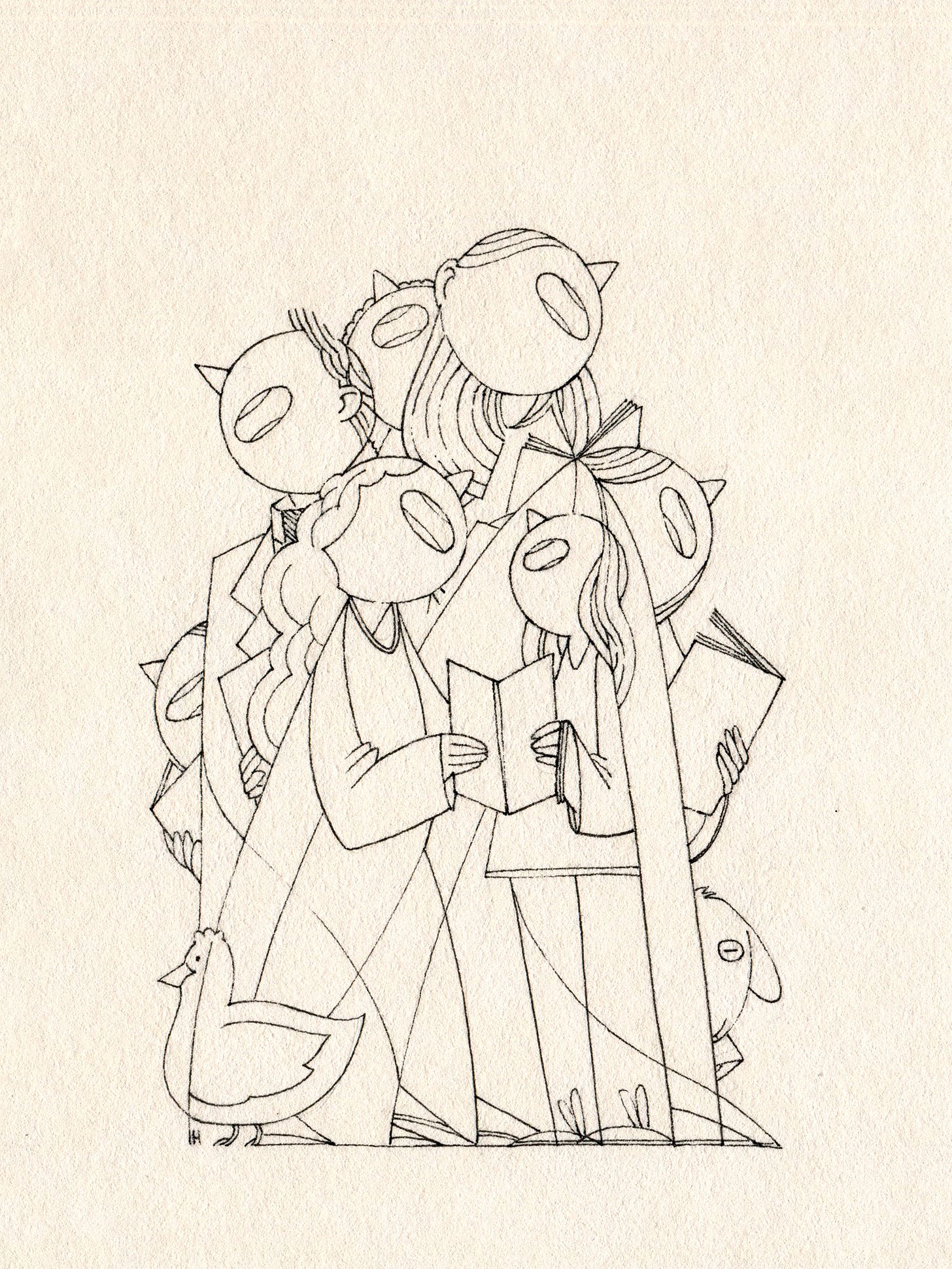Sister Leah Kantor had one of the most challenging callings, perhaps, in all the Church. Many choir directors had to put up with people singing in different keys, but in the Chelm ward choir, singers were frequently on a completely different hymn. No amount of cues or reminders to sing the same song seemed to make a difference: it was just their way. In matters of argumentation and debate, there was a saying: “two Jews, three views.” In Chelm ward choir practices, where people sang whatever combination of words and melodies they could call up from their uneven memories, it was “two Saints, three songs.”
Still, Sister Kantor had tried to unify the group. They needed some sort of harmony. Half the joy of being in choir was different voices meeting. So if a choir member did not want to sing “Now Let Us Rejoice,” she might try to nudge them into bringing the words of another song, like “The Spirit of God,” onto the same melody. It was important that choir members have a good experience, because—in a Church run on unpaid labor—choir was one of the few truly volunteer positions. Sister Kantor might be called of God whether she was interested or not, but her singers needed to feel drawn in.
For purposes of recruiting and retention, then, she simply had to make the numbers memorable for choir members and the congregation. To set apart choir numbers as performances, a special offering distinct from ordinary congregational singing. Obviously, volunteer singers were an unwieldy tool for pursuing that goal. When she tried to divide them into sopranos, altos, tenors, and basses, for example, a certain member of the Cohen family derailed practice with complaints about how four was too many genders. So Sister Kantor worked other angles as well. For example, she met early with Belka Fischer, who played the piano and was called of God to pretend to play the organ. “When you practice a song for the choir,” Sister Kantor suggested, “don’t start from the beginning. Start by practicing the last few lines. Once you’ve really mastered them, you can work your way forward.” The effect was striking. While most hymns slowed down between the beginning and the end, choir numbers began to speed up!
Sister Kantor, however, did not rest on her laurels after accelerating the organ accompaniment. There was so much more a choir director could do. In her pursuit of a complete artistic experience, Sister Kantor thought of ways to accompany choir numbers visually, through lighting or props. These efforts did not always go smoothly. Like the time she prepared them to sing “Lead Kindly, Light”: it was only after she lit a candle and darkened the chapel that she discovered no one had memorized the words, let alone the tune!
Next, she’d tried “All Creatures of Our God and King,” but at the final rehearsal the hens she brought in had roosted in the piano, the goats took a bite out of her sheet music, and one of the sheep got lost. They’d all had to leave practice then to search for it, until Lemel carried it back on his shoulders. For the actual performance, she scaled down to a few strategically placed fishbowls. Nothing went wrong with them—it occurred to her that they were a nice alternative to putting flowers on the stand, and might add visual interest to a funeral—but they failed to capture the scale of grandeur in the hymn and left her unsatisfied.
After that, she made a strategic pivot in her pursuit of excellence. In essence, the pivot was to aim for good enough instead. She still rehearsed the choir for months, of course, but she accepted that their rendition of “Israel, Israel, God is Calling” would likely include a few strains of “Welcome, Welcome Sabbath Morning.” She resolved to be the live prop she wanted to see in the choir, conducting with the poise and visual flourish of a master, and leaving any extra chickens out of it. Given the theme of the song, a part of her hoped that the audible voice of God would make a guest appearance, “but if not,” as the scriptures said, she would still keep the people singing.
At last, the great and terrible day of their performance came. Little Breyndl Fisher, the choir’s youngest member, froze halfway up the aisle with stage fright, but after checking to see if she still wanted to perform, Lemel scooped her up just like a lamb to carry her to the stand. Breyndl stood there, stiff, ready to mumble-whisper the words. Fair enough, Leah Kantor thought. When many are called it’s all right if a few get frozen. Though she couldn’t help but feel a little of that same petrifying nervousness as she glanced from Belka at the organ to the unfocused faces of her singers, the feeling fled as she lifted her arms to conduct.
The men’s voices rang deep and resonant through the chapel as they sang, “Israel, Israel, Sabbath morning” and “Welcome, Welcome, God is calling.” On the second line (or third, as they saw fit) the sisters came in with “now we rest from lands of woe” and “calling thee from every care.”
And then, three miracles happened.
For just one glorious moment, everyone in the choir sang in the exact same key.
And old Israel Lewensztajn, who always slept through sacrament meeting, suddenly stirred, blinked, rose up and looked around . . .
as, for the first time anyone could remember, the phone in the bishop’s office began to ring.
Sister Kantor smiled. She had always wondered what God’s audible voice would sound like.
James Goldberg is a poet, playwright, essayist, novelist, documentary filmmaker, scholar, and translator who specializes in Mormon literature.
Artwork by David Habben.
To order the complete Tales of the Chelm First Ward, click here.









